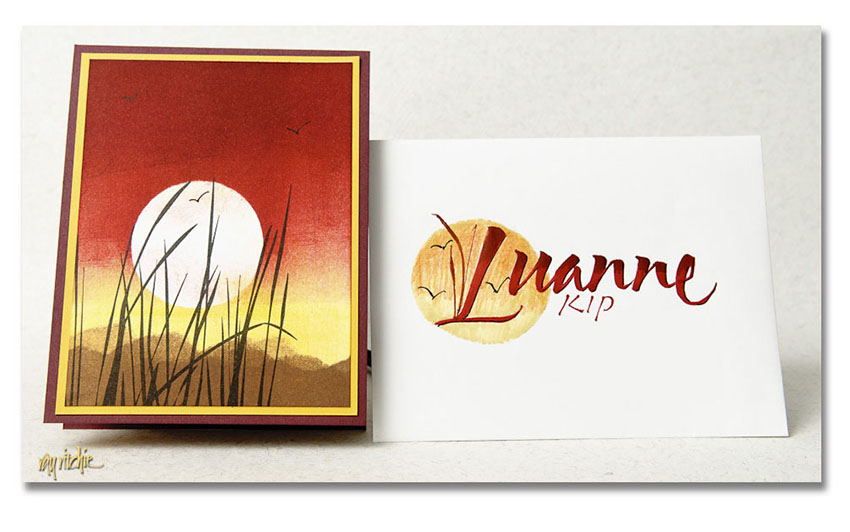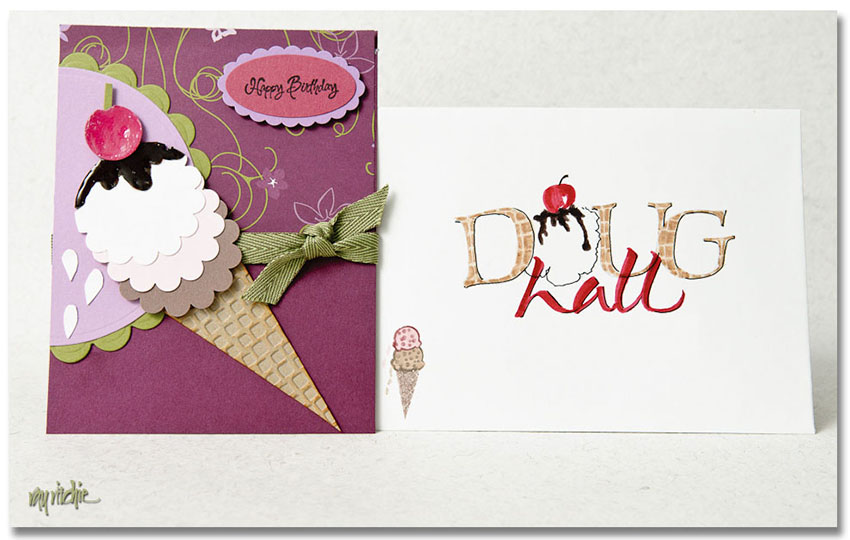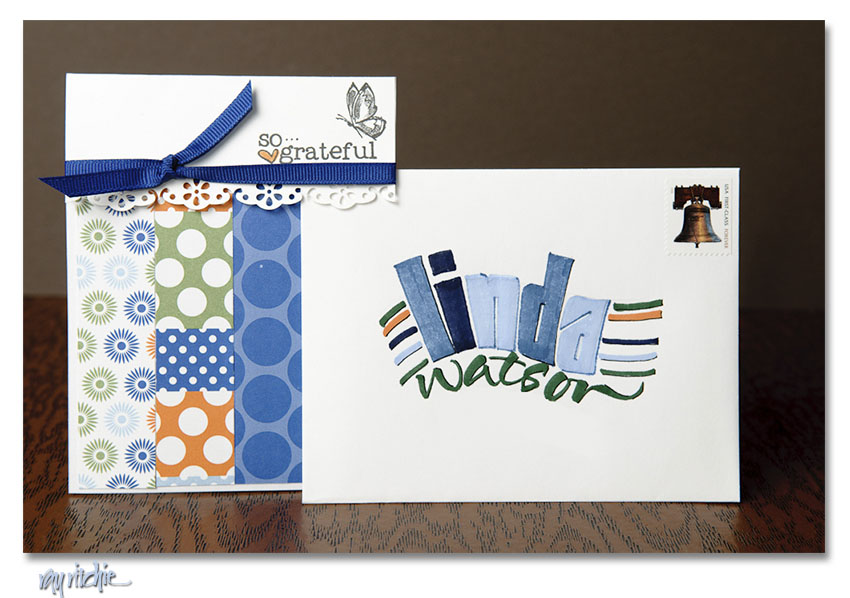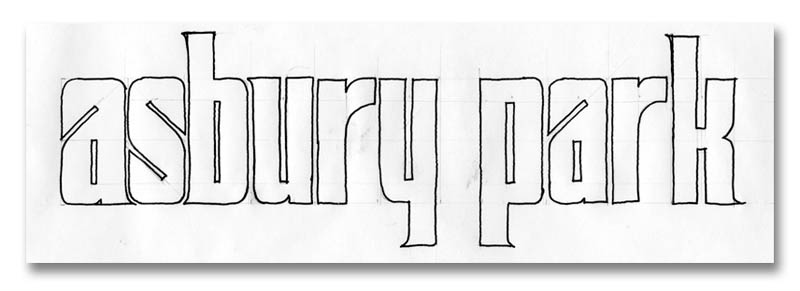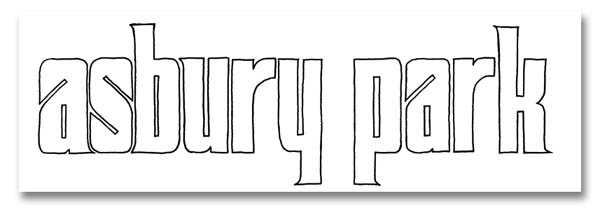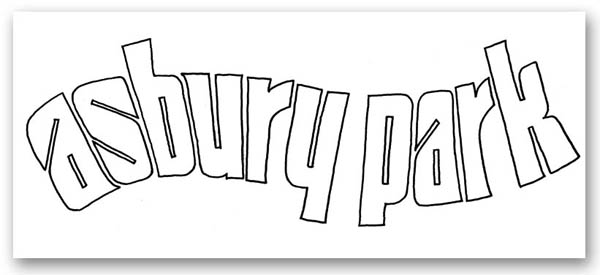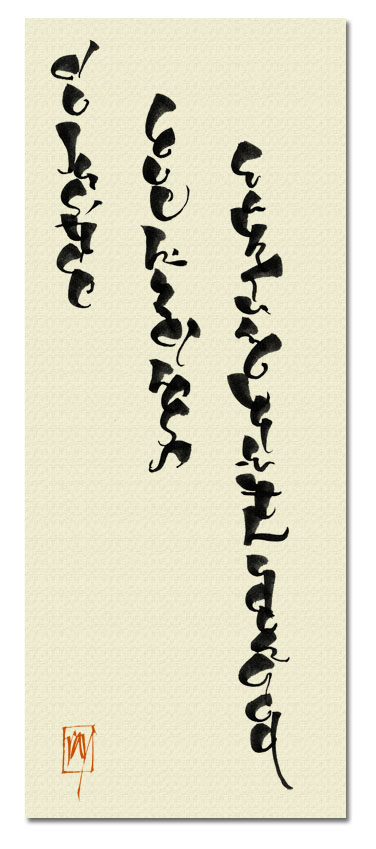Anita is a dedicated card maker. She must make several hundred cards each year, most of them sent to friends and relatives, but occasionally made for sale or for support of some particular organization she’s involved in. Each of these cards is a fairly elaborate construction, perhaps involving rubber stamping, punched or die-cut elements, embossing, layering of papers and textures, and hand coloring and brayering, just to mention a few of the techniques she sometimes uses. After the card is ready, it usually comes to me for design of a matching or complementary envelope.
These envelopes are good opportunities for me to play with styles and colors and experiment with designs I might not do for my own projects. The envelopes, in contrast to Anita’s carefully worked out designs, are usually only about one step above a doodle. I typically grab a felt-tip brush marker (we have a set of colors that match most of her card stock colors and stamping inks), make some quick sketches on a piece of scrap paper, and then do the envelope. I may use colored pencils, ballpoint pens, and Rapidograph, Pigma, or Uniball pens for some final details and highlighting – whatever is handy at the time. Brush scripts are usually written directly with the marker, and other letter styles are usually drawn with a pencil and then painted in; I rarely go upstairs to my drawing board for my calligraphy pens, gouache, brushes, etc. for casual envelopes like these. Unless I make a major mistake, whatever comes out of the first attempt is what goes in the mail. But it’s fun, and I often like the overall effect. Here are a few recent examples of these collaborations:
Anita asks that I note that the first card above is based on a design by Tami White, the second is based on one by LeeAnn Greff, and the third inspired by a card by Becky Roberts.

